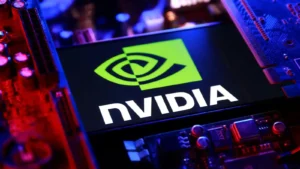https://theworldfinancialforum.com/participate/

US-China Chip War Hits Nvidia and AMD: 15% Levy on China Sales
Nvidia’s The recent revelation that Nvidia must pay the US government 15% of its revenue from advanced chip sales to China underscores the escalating US campaign to curb China’s access to critical semiconductor technology. While Nvidia has been the most visible focal point due to its dominance in AI GPUs, its chief rival, AMD, is navigating the exact same treacherous terrain under identical export control regulations, facing comparable strategic and financial headwinds.
AMD: Caught in the Same Export Control Net
Like Nvidia, AMD designs high-performance GPUs and accelerators (its Instinct MI series) essential for AI training, high-performance computing (HPC), and data centers – the very applications targeted by US national security concerns. Consequently, AMD has been subject to the same export control rules imposed by the US Department of Commerce since late 2022 and significantly tightened in 2023.
- Product Modifications: Just as Nvidia developed the H800 and A800 (and later the H20, GH20, and L20) specifically for the Chinese market by reducing performance to stay below US technical thresholds, AMD followed suit. It created modified versions of its flagship Instinct MI300 and MI250 accelerators, such as the MI210 and reportedly the MI309, designed to comply with the performance limits while still offering value to Chinese customers. This requires significant R&D investment and creates a complex dual-product strategy.
- The 15% Levy Applies Universally: The requirement to remit 15% of revenue from sales of these restricted high-performance chips to China is not a Nvidia-specific penalty. It stems from the broader US export control framework and associated licensing requirements. AMD is equally obligated to comply with this financial provision when selling its modified, but still powerful, accelerators into the Chinese market. This directly impacts AMD’s profitability on China sales, just as it does for Nvidia’s.
- Market Share & Strategic Dilemma: China represents a massive market for data center and AI hardware. While Nvidia currently holds a larger share, AMD has been aggressively competing. The forced modifications and the 15% levy erode the competitiveness and margins for both companies in China. AMD must decide how aggressively to pursue this constrained market, balancing potential revenue gains against the costs of compliance, R&D for modified chips, and the direct financial hit of the levy. Passing the full 15% cost to Chinese customers risks making their products uncompetitive against domestic alternatives or other international players less affected by the rules.
- Accelerating China’s Domestic Push: The restrictions impacting both US giants are a major catalyst for China’s domestic semiconductor industry. Companies like Huawei (with its Ascend AI chips), Cambricon, and Iluvatar Core are receiving immense government and private investment to develop alternatives. AMD, alongside Nvidia, is effectively funding its future competition in China through the levy and by creating market space for local players to fill the performance gap left by the hobbled US products.
Broader Industry Impact
The inclusion of AMD highlights that the US export controls and associated financial burdens are systemic pressures on the entire US high-performance computing sector, not isolated actions against one company. Other firms selling advanced chips or chipmaking equipment into China face similar, though perhaps less publicly detailed, compliance costs and restrictions.
The Path Forward for AMD
AMD’s strategy mirrors Nvidia’s in many ways:
- Compliance: Rigorously adhering to export rules to avoid severe penalties.
- Product Adaptation: Continuing to develop “China-legal” versions of its leading-edge products.
- Cost Absorption/Pass-Through: Carefully managing pricing to absorb some of the 15% levy cost while trying to remain competitive.
- Diversification: Emphasizing growth in other regions (North America, Europe, Japan, India) and in markets less affected by the controls (e.g., certain commercial or consumer segments).
- Lobbying: Engaging with US policymakers to seek clarity or potential adjustments to the rules, though the overall trajectory of tighter controls seems firmly established.
The 15% levy on China chip sales is a stark symbol of the new reality for US semiconductor leaders. While Nvidia’s size and AI dominance make it the headline-grabber, AMD is inextricably linked to this saga, facing identical regulatory burdens, financial penalties, and strategic challenges. The US policy aims to impede China’s technological rise, but it simultaneously imposes significant costs and operational complexities on its own champion companies. As AMD and Nvidia navigate this constrained landscape in China, the global semiconductor industry continues its fractious drift towards competing technological blocs, with the 15% levy serving as a tangible, costly reminder of the deep geopolitical fault lines running through the heart of the tech world.
You might enjoy listening to AI World Deep Dive Podcast: